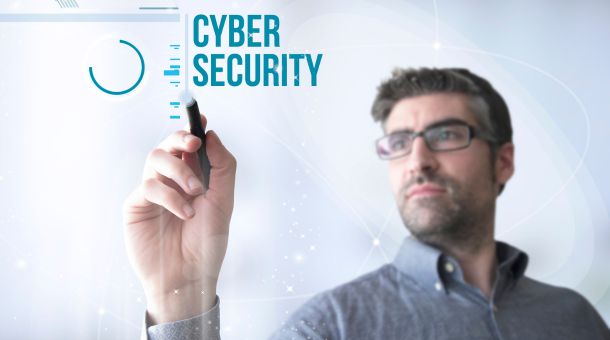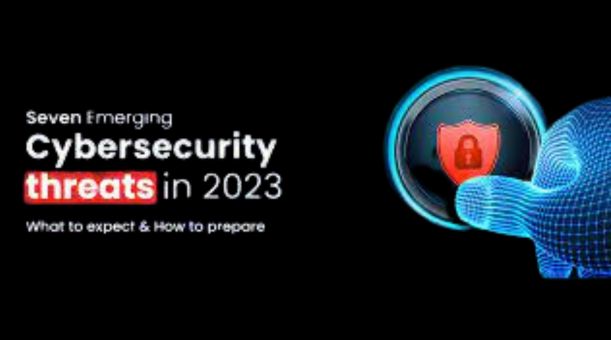As technology advances, the importance of cybersecurity in modern management and leadership strategies cannot be overstated.
Cyber threats like data breaches, ransomware attacks, and phishing scams can seriously affect businesses and organizations. In this article, we will explore how cybersecurity affects modern management and leadership strategies, as well as the challenges leaders and managers face in addressing cybersecurity risks.
We will also discuss effective cybersecurity strategies and the benefits of employee cybersecurity awareness training. Additionally, we will touch on ethical considerations and provide real-world examples of successful cybersecurity leadership and management strategies.
What is cybersecurity?
How cybersecurity affects modern management and leadership strategies? How cybersecurity affects modern management and leadership strategies?How cybersecurity affects modern management and leadership strategies? How cybersecurity affects modern management and leadership strategies? How cybersecurity affects modern management and leadership strategies?

Cybersecurity refers to the practice of protecting computer systems, networks, and electronic devices from theft, damage, or unauthorized access. It involves using technologies, processes, and policies to safeguard digital information and prevent cyber-attacks such as hacking, malware, and phishing. Cybersecurity is becoming increasingly important as more and more of our personal and professional lives are conducted online, and organizations rely on digital systems to store sensitive information.
Why is it important for modern management and leadership strategies?
Sure, here are some reasons why cybersecurity is important for modern management and leadership strategies:
- Cybersecurity measures help safeguard confidential information such as financial records, customer data, and intellectual property, preventing unauthorized access and theft.
- A cyber-attack can disrupt operations, resulting in costly downtime and lost revenue. Leaders and managers can minimize the risk of such disruptions by implementing effective cybersecurity measures.
- Customers trust businesses and organizations with their personal information. A data breach or other cyber-attack can erode that trust, damaging the organization’s reputation and potentially leading to lost business.
- Many industries are subject to regulations requiring sensitive data protection. Leaders and managers must ensure that their organization complies with these regulations.
- Cyber-attacks can be expensive to recover from, with costs including investigation, remediation, and legal fees. Effective cybersecurity measures can reduce the risk and impact of such attacks.
- A strong cybersecurity posture can enable an organization to confidently adopt new technologies and business practices without fear of compromise.
How can cybersecurity threats impact businesses and organizations?
Cybersecurity threats can have a range of impacts on businesses and organizations. Here are some examples:
Financial losses:
Cyber-attacks can result in direct financial losses, such as theft of funds or ransomware demands. Additionally, indirect costs can be associated with remediation, legal fees, and lost productivity.
Reputation damage:
A cyber-attack can damage the reputation of a business or organization, particularly if sensitive data or customer information is compromised. This can result in lost business and difficulty attracting new customers.
Disruption of operations:
Cyber-attacks can disrupt operations, resulting in downtime and lost productivity. This can be particularly damaging for organizations that rely heavily on digital systems.
Legal and regulatory penalties:
Many industries are subject to regulations requiring sensitive data protection. Failure to comply with these regulations can result in fines and legal penalties.
Intellectual property theft:
Cyber-attacks can result in the theft of valuable intellectual property, including trade secrets and patents.
Damage to critical infrastructure:
In some cases, cyber-attacks can target critical infrastructure such as power grids, transportation systems, and healthcare facilities, posing a threat to public safety.
What are some effective cybersecurity strategies for modern businesses and organizations?

Here are some effective cybersecurity strategies for modern businesses and organizations:
- Access to sensitive information should be restricted to those who need it, and strong authentication methods should be in place.
- Organizations should ensure that software and systems are regularly updated to address known vulnerabilities.
- Sensitive data should be encrypted in transit and at rest to prevent unauthorized access.
- Implement firewalls and anti-virus software: Firewalls and anti-virus software can help prevent cyber-attacks and detect malicious activity.
- Employees should receive regular cybersecurity training to help them identify and prevent cyber threats.
- Organizations should implement tools and procedures for monitoring suspicious activity on the organization’s network.
- Organizations should have a plan for responding to cyber-attacks, including communication procedures and steps for containing and remediating the attack.
- Organizations should thoroughly vet them before granting them access to sensitive information.
- Penetration testing can help organizations identify vulnerabilities and ensure effective cybersecurity measures.
Follow best practices for password management: Passwords should be strong, unique, and changed regularly. Additionally, multi-factor authentication should be used wherever possible.
How can cybersecurity awareness training benefit employees and the organization as a whole?
here are some benefits of cybersecurity awareness training for employees and the organization as a whole:
- Improved understanding of cybersecurity risks and threats
- Ability to identify potential cyber-attacks and suspicious activity
- Enhanced ability to protect sensitive information and prevent data breaches
- Improved adherence to cybersecurity policies and best practices
- Reduced risk of cyber attacks and financial losses
- Increased trust and confidence from customers and partners
- Compliance with industry regulations and standards
- Enhanced reputation and brand image
- Increased innovation and adoption of new technologies with confidence
How can leaders and managers stay current on cybersecurity trends and best practices?

Here are some ways leaders and managers can stay up-to-date on the latest cybersecurity trends and best practices:
Attend conferences and seminars: Cybersecurity conferences and seminars can provide leaders and managers access to the latest research, trends, and best practices in the industry.
Join industry groups and organizations: Joining industry groups and organizations can provide access to networking opportunities, training resources, and information-sharing on cybersecurity topics.
Subscribe to industry publications: Subscribing to industry publications can provide leaders and managers with regular updates on cybersecurity trends and best practices.
Participate in cybersecurity exercises: These exercises can help leaders and managers stay up-to-date on the latest threats and practice responding to cyber-attacks.
Engage with cybersecurity experts: Engaging with cybersecurity experts can provide leaders and managers with access to specialized knowledge and advice on cybersecurity issues.
Conduct regular risk assessments: Regular risk assessments can help leaders and managers identify potential vulnerabilities and stay up-to-date on the latest cybersecurity threats.
Utilize cybersecurity tools and technologies: Leaders and managers should utilize them to protect their organizations from cyber-attacks and stay up-to-date on the latest security measures.
Encourage continuous learning: Leaders and managers should encourage continuous learning and professional development among their employees to ensure they stay up-to-date on the latest cybersecurity trends and best practices.
What are some real-world examples of effective cybersecurity leadership and management strategies?
Here are some real-world examples of effective cybersecurity leadership and management strategies:
- Microsoft Corporation
- JPMorgan Chase & Co.
- Cisco Systems, Inc.
- IBM Corporation
- Google LLC
- Amazon.com, Inc.
- United States Department of Defense
- Goldman Sachs Group Inc.
- American Express Company
- PayPal Holdings, Inc.
FAQ Section
What are some challenges in implementing effective cybersecurity strategies in organizations?
Some challenges in implementing effective cybersecurity strategies in organizations include budget constraints, lack of resources and expertise, resistance to change, lack of executive support and buy-in, inadequate employee training and awareness, evolving cybersecurity threats and technologies, and the complexity of managing multiple systems and vendors.
What are some common types of cybersecurity threats that organizations face?
Some common types of cybersecurity threats that organizations face include malware, phishing attacks, ransomware, denial-of-service attacks, password attacks, insider threats, and social engineering attacks.
What are some best practices for incident response planning in a cyber-attack?
Best practices for incident response planning in the event of a cyber-attack include having a clearly defined incident response team, establishing clear communication protocols, creating a detailed incident response plan, regularly testing the incident response plan, ensuring backups are regularly updated and secure, and promptly reporting the incident to appropriate authorities.
How can third-party vendors and contractors pose a cybersecurity risk to organizations?
Third-party vendors and contractors can pose a cybersecurity risk to organizations by introducing vulnerabilities in the organization’s systems and networks, mishandling sensitive data, or failing to comply with cybersecurity policies and standards. It is important for organizations to carefully vet third-party vendors and contractors and ensure they have adequate cybersecurity controls in place.
Conclusion
cybersecurity is essential to modern management and leadership strategies as cyber threats evolve and pose significant risks to organizations. Leaders and managers must take a proactive approach to cybersecurity and implement effective strategies to protect their businesses and assets. These strategies may include access controls, regular software updates, cybersecurity training for employees, incident response planning, and best practices for password management.
It is also crucial for leaders and managers to stay up-to-date on the latest cybersecurity trends and best practices and to address challenges such as budget constraints, evolving threats and technologies, and the complexity of managing multiple systems and vendors. By taking these steps, organizations can minimize the risk of cyber-attacks, protect sensitive information, and enhance their reputation and brand image.




